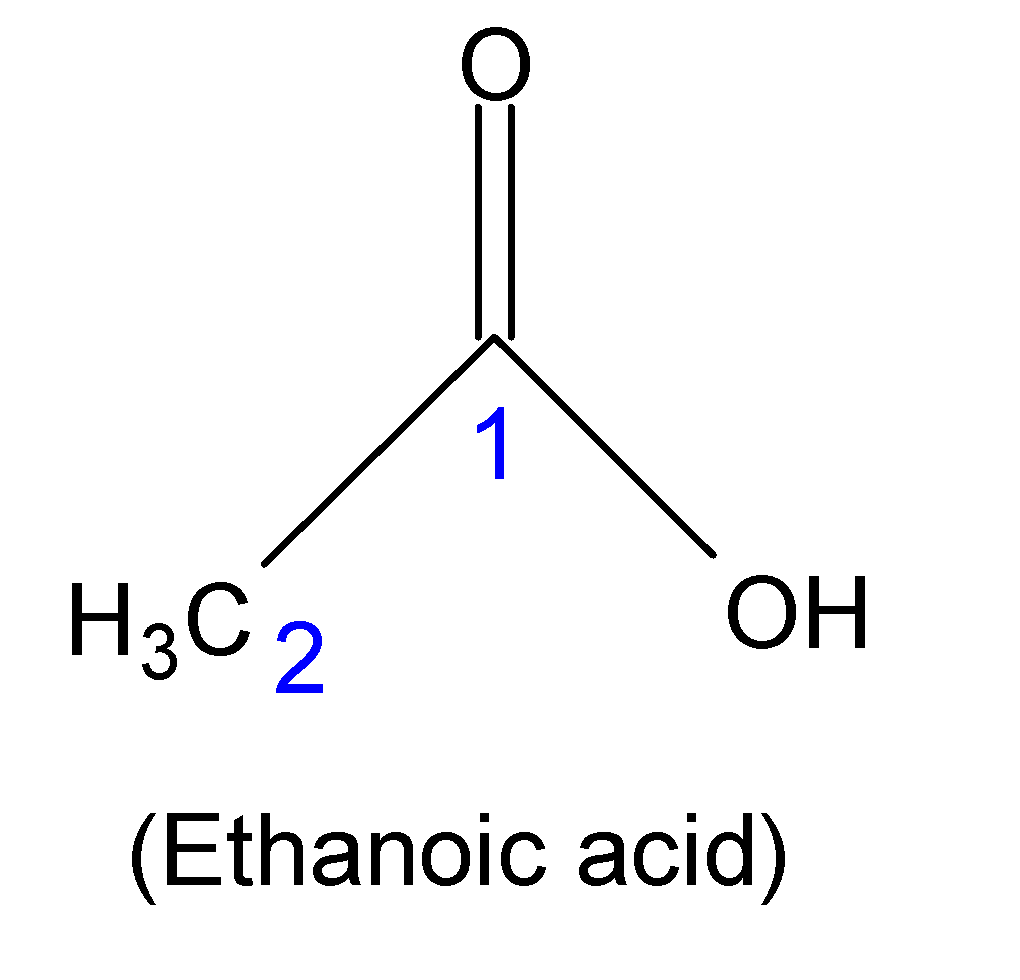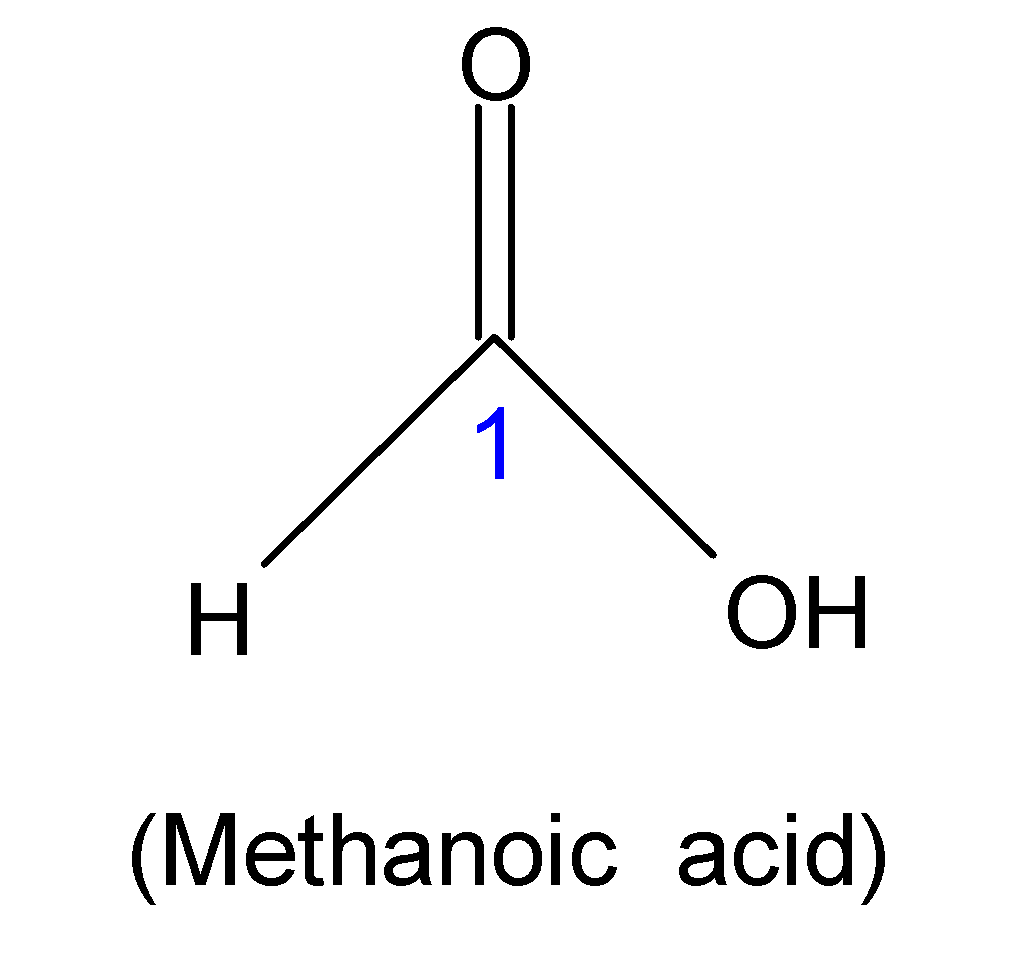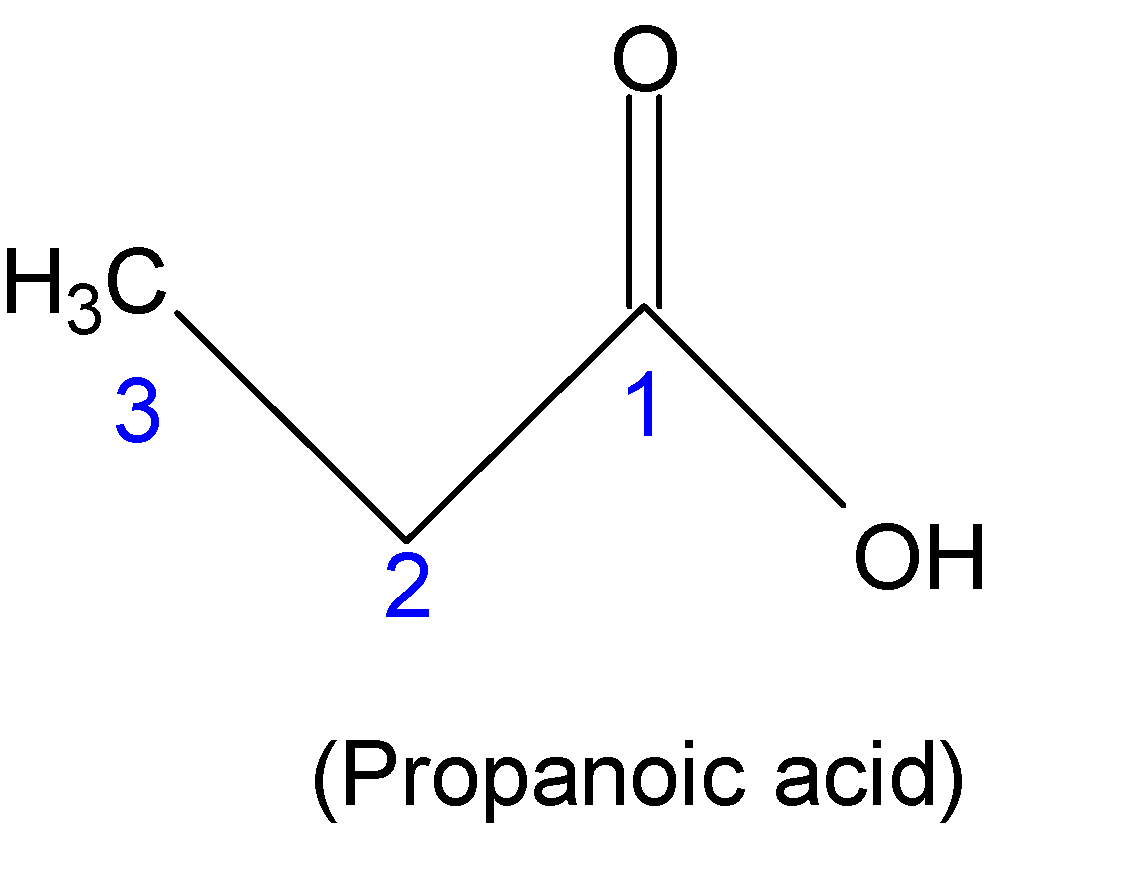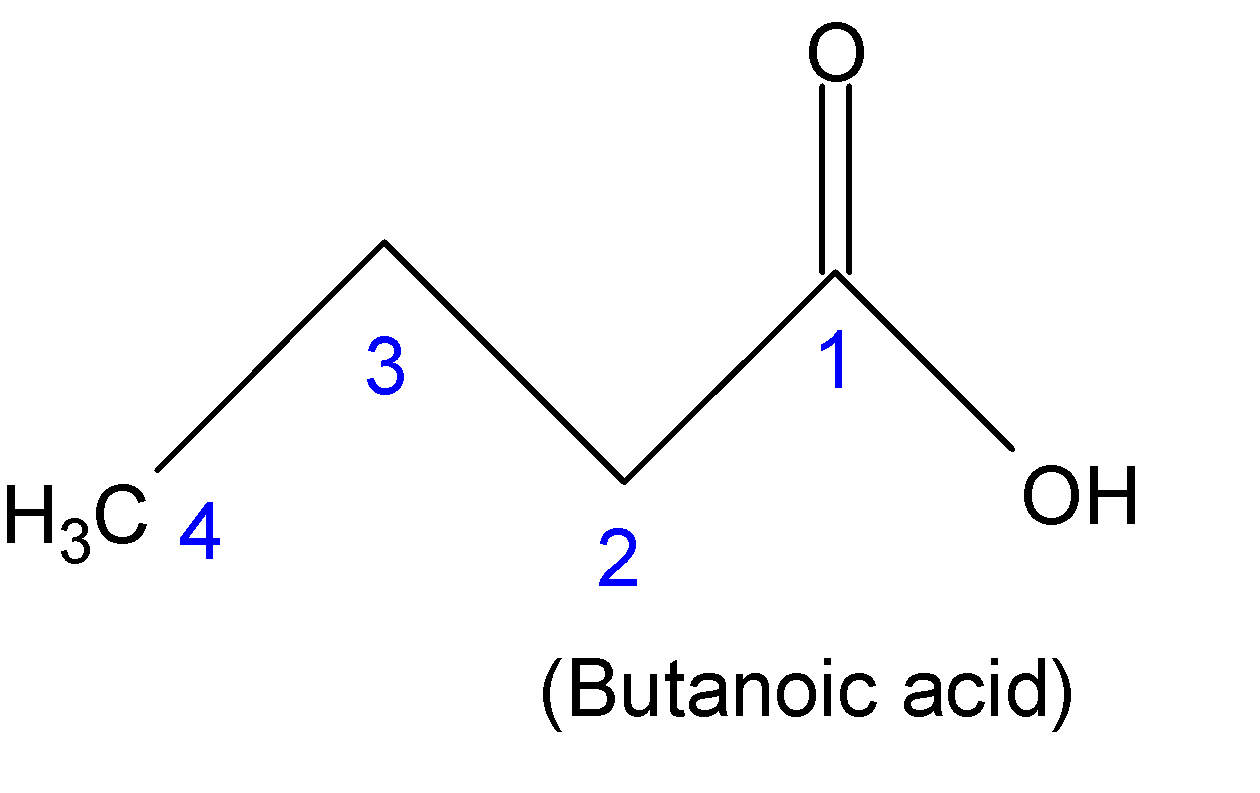
Which one is called ethanoic acid [CPMT $1997$]
A.$HCOOH$
B.$C{{H}_{3}}COOH$
C.$C{{H}_{3}}C{{H}_{2}}COOH$
D.$C{{H}_{3}}C{{H}_{2}}C{{H}_{2}}COOH$
Answer
221.7k+ views
Hint: carboxylic acid is an organic compound in which a carbon atom is attached to an oxygen atom by a double bond and a hydroxyl group, $-OH$group by a single bond. Here we also have carboxylic acid, ethanoic acid is given. So, we just have to find out the chemical formula of ethanoic acid.
Complete answer:Carboxylic acid is an organic compound with a functional group. $-COOH$ and general formula $R-COOH$where $R$denotes alkyl or aryl groups. The general structures of the carboxylic acid are shown below:

We can derive the IUPAC name of carboxylic acid from the total carbon atom from the longest carbon chain that contains the carboxyl group by dropping the final $\text{-e}$from the name of the parent alkane and then adding the suffix ‘oic acid’. The chain numbering is started from the carbon of the carboxyl group, $-COOH$.
For example, an acid $C{{H}_{3}}COOH$has two carbon atoms, and thereby it is called ethanoic acid [That is (ethan $+$oic acid)$=$ethanoic acid].

In this problem, we have four different carboxylic acids. Let us see their IUPAC name one by one.
In (A),$HCOOH$ has only one carbon atom, hence it is called methanoic acid.

In (B) we have already seen above that this is ethanoic acid.
$C{{H}_{3}}C{{H}_{2}}COOH$ has three carbon atoms and thereby the IUPAC name of this compound is propanoic acid.

Finally, (D)$C{{H}_{3}}C{{H}_{2}}C{{H}_{2}}COOH$, has four carbon atoms, then the IUPAC name would be butanoic acid.

Therefore ethanoic acid is acetic acid with the chemical formula $C{{H}_{3}}COOH$.
Thus, option (B) is correct.
Note: To approach these IUPAC nomenclature-related problems we must have to learn to give proper numbering to the longest carbon chain and should also remember the prefix is used based on the total carbon atom present in the longest chain. For example, for one carbon atom the prefix ‘$meth-$’, for two carbon atoms, the prefix ‘$eth-$’, for three carbon atoms, the prefix$prop-$’ is used, and so on.
Complete answer:Carboxylic acid is an organic compound with a functional group. $-COOH$ and general formula $R-COOH$where $R$denotes alkyl or aryl groups. The general structures of the carboxylic acid are shown below:

We can derive the IUPAC name of carboxylic acid from the total carbon atom from the longest carbon chain that contains the carboxyl group by dropping the final $\text{-e}$from the name of the parent alkane and then adding the suffix ‘oic acid’. The chain numbering is started from the carbon of the carboxyl group, $-COOH$.
For example, an acid $C{{H}_{3}}COOH$has two carbon atoms, and thereby it is called ethanoic acid [That is (ethan $+$oic acid)$=$ethanoic acid].

In this problem, we have four different carboxylic acids. Let us see their IUPAC name one by one.
In (A),$HCOOH$ has only one carbon atom, hence it is called methanoic acid.

In (B) we have already seen above that this is ethanoic acid.
$C{{H}_{3}}C{{H}_{2}}COOH$ has three carbon atoms and thereby the IUPAC name of this compound is propanoic acid.

Finally, (D)$C{{H}_{3}}C{{H}_{2}}C{{H}_{2}}COOH$, has four carbon atoms, then the IUPAC name would be butanoic acid.

Therefore ethanoic acid is acetic acid with the chemical formula $C{{H}_{3}}COOH$.
Thus, option (B) is correct.
Note: To approach these IUPAC nomenclature-related problems we must have to learn to give proper numbering to the longest carbon chain and should also remember the prefix is used based on the total carbon atom present in the longest chain. For example, for one carbon atom the prefix ‘$meth-$’, for two carbon atoms, the prefix ‘$eth-$’, for three carbon atoms, the prefix$prop-$’ is used, and so on.
Recently Updated Pages
Types of Solutions in Chemistry: Explained Simply

States of Matter Chapter For JEE Main Chemistry

Difference Between Alcohol and Phenol: Structure, Tests & Uses

Conduction Explained: Definition, Examples & Science for Students

Balancing of Redox Reactions - Important Concepts and Tips for JEE

Atomic Size - Important Concepts and Tips for JEE

Trending doubts
JEE Main 2026: Application Form Open, Exam Dates, Syllabus, Eligibility & Question Papers

Derivation of Equation of Trajectory Explained for Students

Hybridisation in Chemistry – Concept, Types & Applications

Understanding the Angle of Deviation in a Prism

How to Convert a Galvanometer into an Ammeter or Voltmeter

Degree of Dissociation: Meaning, Formula, Calculation & Uses

Other Pages
Solutions Class 12 Chemistry Chapter 1 CBSE Notes - 2025-26

NCERT Solutions For Class 12 Chemistry Chapter 1 Solutions - 2025-26

The D and F Block Elements Class 12 Chemistry Chapter 4 CBSE Notes - 2025-26

NCERT Solutions for Class 12 Chemistry Chapter Chapter 7 Alcohol Phenol and Ether

NCERT Solutions ForClass 12 Chemistry Chapter Chapter 8 Aldehydes Ketones And Carboxylic Acids

JEE Advanced Marks vs Ranks 2025: Understanding Category-wise Qualifying Marks and Previous Year Cut-offs




